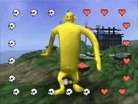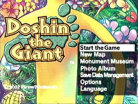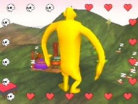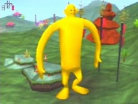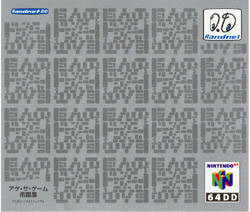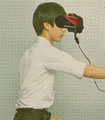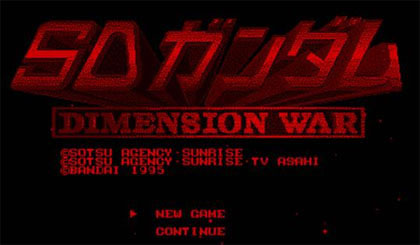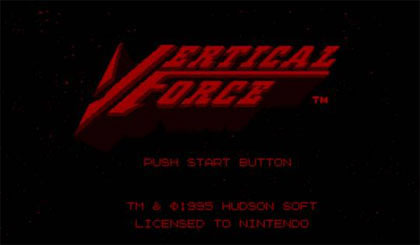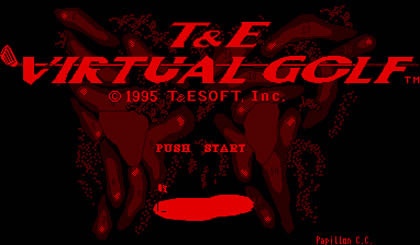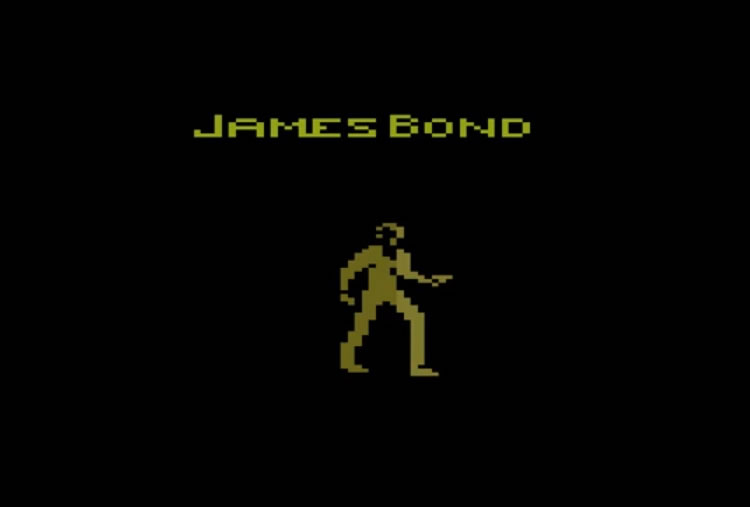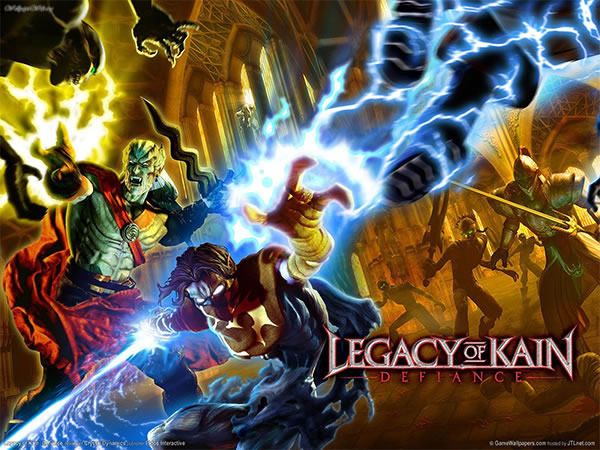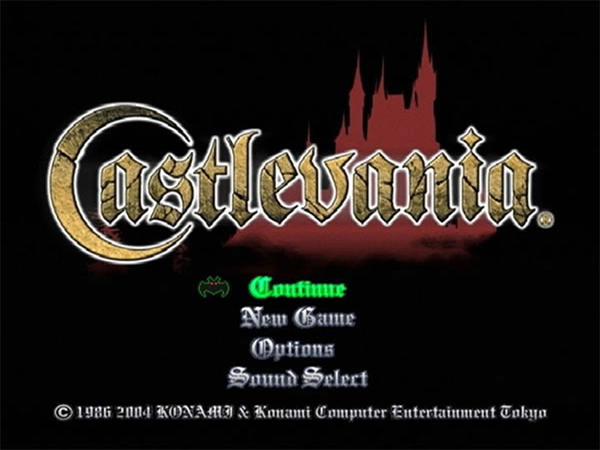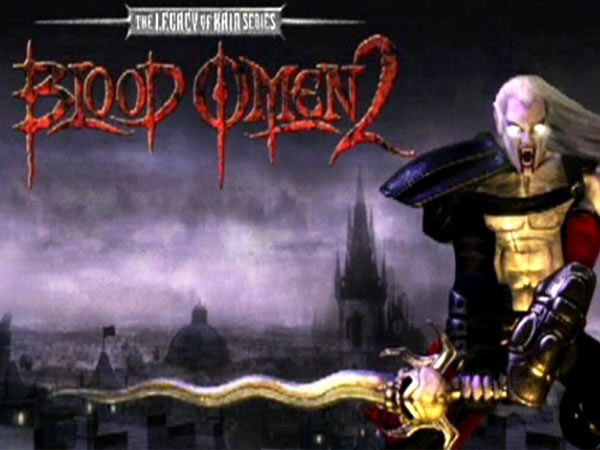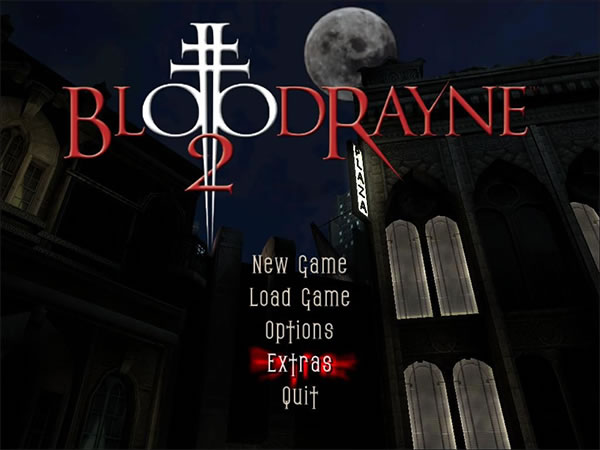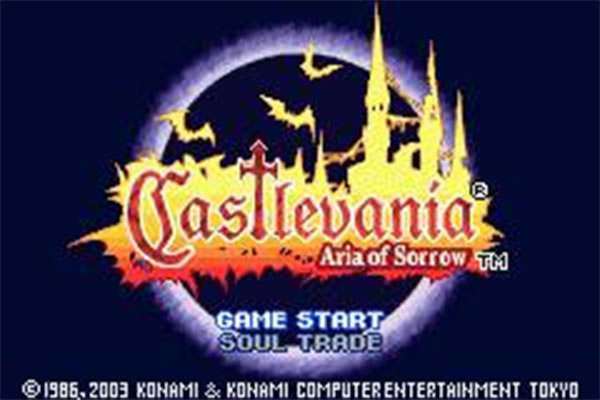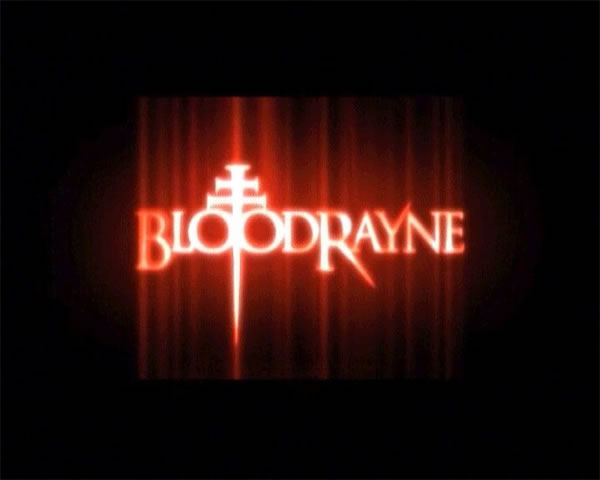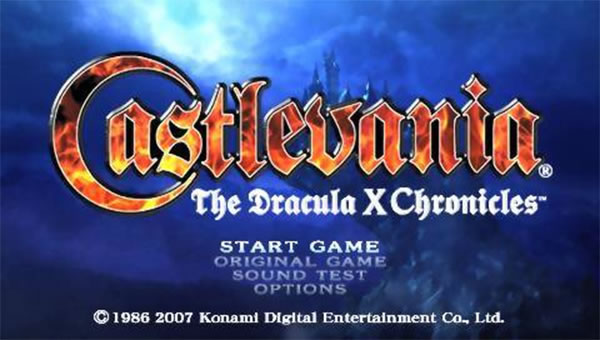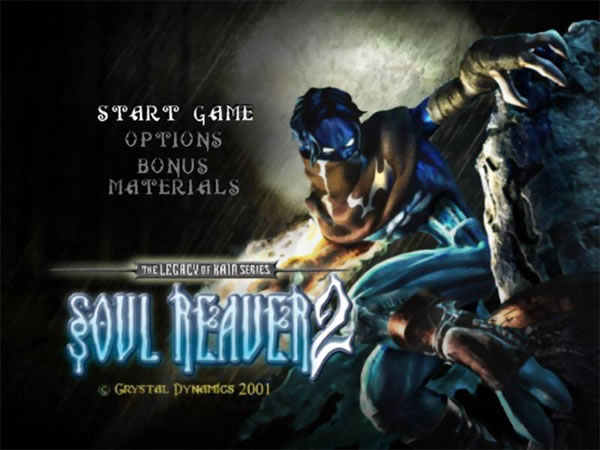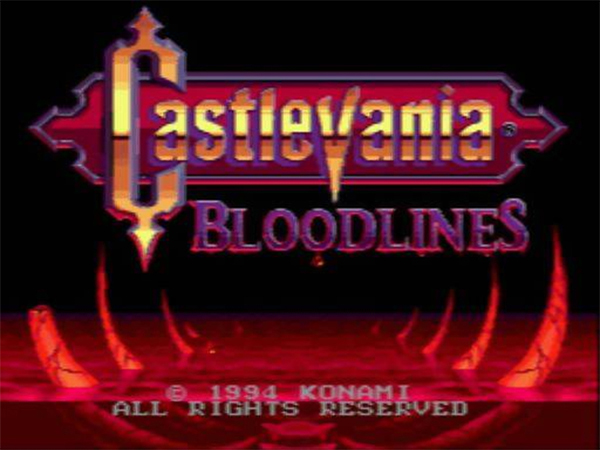- CLASSIC MAGAZINES
- REVIEW CREW
A show recapping what critics thought back
when classic games first came out! - NEXT GENERATION'S BEST & WORST
From the worst 1-star reviews to the best
5-stars can offer, this is Next Generation! - NINTENDO POWER (ARCHIVE)
Experience a variety of shows looking at the
often baffling history of Nintendo Power! - MAGAZINE RETROSPECTIVE
We're looking at the absolutely true history of
some of the most iconic game magazines ever! - SUPER PLAY'S TOP 600
The longest and most ambitious Super NES
countdown on the internet! - THEY SAID WHAT?
Debunking predictions and gossip found
in classic video game magazines! - NEXT GENERATION UNCOVERED
Cyril is back in this spin-off series, featuring the
cover critic review the art of Next Generation! - HARDCORE GAMER MAGAZING (PDF ISSUES)
Download all 36 issues of Hardcore Gamer
Magazine and relive the fun in PDF form!
- REVIEW CREW
- ELECTRONIC GAMING MONTHLY
- ELECTRONIC GAMING MONTHLY RANKS
From Mario to Sonic to Street Fighter, EGM
ranks classic game franchises and consoles! - ELECTRONIC GAMING MONTHLY BEST & WORST
Counting down EGM’s best and worst reviews
going year by year, from 1989 – 2009! - ELECTRONIC GAMING BEST & WORST AWARDS
11-part video series chronicling the ups and
downs of EGM’s Best & Worst Awards!
- ELECTRONIC GAMING MONTHLY RANKS
- GAME HISTORY
- GAME OVER: STORY BREAKDOWNS
Long-running series breaking down game
stories and analyzing their endings! - A BRIEF HISTORY OF GAMING w/ [NAME HERE]
Real history presented in a fun and pithy
format from a variety of game historians! - THE BLACK SHEEP
A series looking back at the black sheep
entries in popular game franchises! - INSTANT EXPERT
Everything you could possibly want to know
about a wide variety of gaming topics! - FREEZE FRAME
When something familiar happens in the games
industry, we're there to take a picture! - I'VE GOT YOUR NUMBER
Learn real video game history through a series
of number-themed episodes, starting at zero! - GREAT MOMENTS IN BAD ACTING
A joyous celebration of some of gaming's
absolute worst voice acting!
- GAME OVER: STORY BREAKDOWNS
- POPULAR SHOWS
- DG NEWS w/ LORNE RISELEY
Newsman Lorne Riseley hosts a regular
series looking at the hottest gaming news! - REVIEW REWIND
Cyril replays a game he reviewed 10+ years
ago to see if he got it right or wrong! - ON-RUNNING FEUDS
Defunct Games' longest-running show, with
editorials, observations and other fun oddities! - DEFUNCT GAMES QUIZ (ARCHIVE)
From online quizzes to game shows, we're
putting your video game knowledge to the test!- QUIZ: ONLINE PASS
Take a weekly quiz to see how well you know
the news and current gaming events! - QUIZ: KNOW THE GAME
One-on-one quiz show where contestants
find out if they actually know classic games! - QUIZ: THE LEADERBOARD
Can you guess the game based on the classic
review? Find out with The Leaderboard!
- QUIZ: ONLINE PASS
- DEFUNCT GAMES VS.
Cyril and the Defunct Games staff isn't afraid
to choose their favorite games and more! - CYRIL READS WORLDS OF POWER
Defunct Games recreates classic game
novelizations through the audio book format!
- DG NEWS w/ LORNE RISELEY
- COMEDY
- GAME EXPECTANCY
How long will your favorite hero live? We crunch
the numbers in this series about dying! - VIDEO GAME ADVICE
Famous game characters answer real personal
advice questions with a humorous slant! - FAKE GAMES: GUERILLA SCRAPBOOK
A long-running series about fake games and
the people who love them (covers included)! - WORST GAME EVER
A contest that attempts to create the worst
video game ever made, complete with covers! - LEVEL 1 STORIES
Literature based on the first stages of some
of your favorite classic video games! - THE COVER CRITIC
One of Defunct Games' earliest shows, Cover
Critic digs up some of the worst box art ever! - COMMERCIAL BREAK
Take a trip through some of the best and
worst video game advertisements of all time! - COMIC BOOK MODS
You've never seen comics like this before.
A curious mix of rewritten video game comics!
- GAME EXPECTANCY
- SERIES ARCHIVE
- NINTENDO SWITCH ONLINE ARCHIVE
A regularly-updated list of every Nintendo
Switch Online release, plus links to review! - PLAYSTATION PLUS CLASSIC ARCHIVE
A comprehensive list of every PlayStation
Plus classic release, including links! - RETRO-BIT PUBLISHING ARCHIVE
A regularly-updated list of every Retro-Bit
game released! - REVIEW MARATHONS w/ ADAM WALLACE
Join critic Adam Wallace as he takes us on a
classic review marathon with different themes!- DEFUNCT GAMES GOLF CLUB
Adam Wallace takes to the links to slice his way
through 72 classic golf game reviews! - 007 IN PIXELS
Adam Wallace takes on the world's greatest spy
as he reviews 15 weeks of James Bond games! - A SALUTE TO VAMPIRES
Adam Wallace is sinking his teeth into a series
covering Castlevania, BloodRayne and more! - CAPCOM'S CURSE
Adam Wallace is celebrating 13 days of Halloween
with a line-up of Capcom's scariest games! - THE FALL OF SUPERMAN
Adam Wallace is a man of steel for playing
some of the absolute worst Superman games! - THE 31 GAMES OF HALLOWEEN
Adam Wallace spends every day of October afraid
as he reviews some of the scariest games ever! - 12 WEEKS OF STAR TREK
Adam Wallace boldly goes where no critic has
gone before in this Star Trek marathon!
- DEFUNCT GAMES GOLF CLUB
- DAYS OF CHRISTMAS (ARCHIVE)
Annual holiday series with themed-episodes
that date all the way back to 2001!- 2015: 30 Ridiculous Retro Rumors
- 2014: 29 Magazines of Christmas
- 2013: 29 Questionable Power-Ups of Christmas
- 2012: 34 Theme Songs of Christmas
- 2011: 32 Game Endings of Christmas
- 2010: 31 Bonus Levels of Christmas
- 2009: 30 Genres of Christmas
- 2008: 29 Controls of Christmas
- 2007: 34 Cliches of Christmas
- 2006: 33 Consoles of Christmas
- 2005: 32 Articles of Christmas
- 2004: 31 Websites of Christmas
- 2003: 29 Issues of Christmas
- 2002: 28 Years of Christmas
- 2001: 33 Days of Christmas
- NINTENDO SWITCH ONLINE ARCHIVE
- REVIEW ARCHIVE
- FULL ARCHIVE
Doshin the Giant
To understand this quirky little game, one with really plain, yet stylish graphics, we need to start with a quote from the game's lead designer Mr. Kazutoshi Iida:
"It has taken three years of hard work here at Param (Marigul), but we're finally able to present 'Doshin the Giant 1'. Mr. Shigeru Miyamoto from Nintendo has said that computer games incorporate a world-wide common language, and 'Doshin' illustrates this very clearly. Personally, I've gained a new understanding about games as 'a common language that supersedes not only nationality but also age'."
The genre listed is 'Tropical-Style Up N Down', which may sound like a bit of a joke, but it is in fact the most straightforward way of expressing the game's charm. You see, an integral part of the fun in Doshin comes from manipulating the terrain on the game's southern island setting. Something that might not normally seem fun, but is actually pretty addictive.
Managing to raise or lower the land through trial-and-error is somehow reminiscent of playing in a sand pit. There are a couple of methods one can use for raising and lowering the terrain, including using Doshin's long arms to pull the ground up (or jump on it to lower it). You can also use magical powers to change your surroundings.
Doshin is a giant that appears from the sky at dawn and disappears at dusk. He seems to be an incarnation of the sun. Each day in the game lasts 30 real minutes, which doesn't give you a whole lot of time. In the limited time available, you must choose a theme and behave accordingly.
Doshin is a giant, but on first appearance he is a surprisingly small giant. But don't fret, there are three ways to increase Doshin's size. Doshin can perform human-friendly actions, aquiring hearts from the little people. Collect enough of these hearts and you will grow in size. Doshin can also grow by collecting skulls, which you get by performing an action that is NOT friendly to the humans.
You are also able to absorb paradise energy to grow bigger. You see, "Paradise" is the area on the island densely covered by trees. If Doshin lingers in this area, he will grow in size. But as he grows, the surrounding trees will disappear. The bigger he grows, the bigger the changes are in the island's terrain. As Doshin's steps increase in length, so does his speed, and walking the island becomes much easier. However, if Doshin gets too big, he is more likely to step on humans or destroy their buildings. The challenge comes in keeping the Yin/Yen balance right, to achieve perfect harmony for Doshin.
After 30 minutes, evening descends, and the giant vanishes from the island. The next day, he will appear as usual, but will have returned to his original size. At that point you can continue with the previous strategy, or try something different. This set-in-stone cycle means that you either play a repeating or very different game depending on your tactics to get all the monuments (more on that in a second). There are 49 generations of giants (yes that's almost 25 hours of gameplay if you make it through each day) and your progress carries on from the previous giant.
The game is set on the southern island of Barudo, and Sodoru Memo is the in-game narrator. Four types of human live on the island, and they can be recognized by the colour of their hats and clothes. The humans may ask the giant to bring them a tree, or to raise or lower the land. Once you react to their request, the humans will begin to work, and then form a settlement. When the settlement reaches its final stage of development, they will begin construction of a monument, which can range from a simple pile of stones to a beautifully decorated complex construction.
There are 16 different types in total, and the type built is decided by the combination of colours of the people in the settlement (different cultures will have different songs for you to recognize them by), you'll need to exchange different coloured inhabitants of sometimes far away villages with each other to progress. The humans will tend to leave the group or stop working altogether and begin to play, but only when all 16 monuments have been built the ending scene will appear. This is a big part of the game strategy, to guide them so they continue to work "for you".
Humans that the giant accidentally steps on will turn into lotuses (you'll see their spirit float away), and in the next game these will have become trees. Strategically, sticking to this rule will ensure smooth progression through the game, but is a very aggressive strategy and to deliberately control the number of humans isn't very nice... tender loving care anyone? Not only do you have to be careful Doshin does not step on humans, but natural disasters like wandering fires, volcanic eruptions, insect plagues, and tornados can do A LOT of damage to not only the buildings you managed to get made, but the latter of which always kills many humans. Unless you get there in time to lower the ground, to extinguish fires, or walk into a tornado to block it's moving around the villages, which destroys everything in sight.
I'm not kidding when I say this game is a lot of classic/pure fun, nicely strategic and although I can't understand one word of the games commencers it's still awesome to hear the Dragon Ball Z voice-over (Mr. Gozo Soma) guide you through the game. The female voice-over (Ms. Tamaki Ogawa) is too cute when she warns you that silly Doshin stumbles and falls over... flat on his face.
The game is really addictive in it's own simple way. I like this game most of all 64DD games, because the little men you have to help build towns aren't speaking Japanese, their talking with symbols and basic language like singing, chanting, sleeping, calling for help etc. Which is great, because I don't understand two words of Japanese. You can save your progress by taking a nap, so if you can overlook the somewhat slow controls and simple graphics, you'll keep coming back for more, as long as you don't go over the mystical & deadly edge of the world!
To keep the theme of the game interesting you'll feel a battle between doing good and bad throughout Doshin's incarnations. In the end it's true that this God-game can be best described as: "Populous meets Mario." Instead of buying a 64DD set-up just for this game I suggest importing the upgraded graphics, environment, AI and overall harder difficulty level version made for GameCube by the original team and Giles Goddard. This newer version went on to sell over 200,000 copies in Japan alone against the originals 15,000. After this success, the game even got converted into English and was released on 20 September 2002 in PAL territories. I'd like to close off by saying: Yes that is Doshin's bellybutton what you're looking at, nothing else.
"It has taken three years of hard work here at Param (Marigul), but we're finally able to present 'Doshin the Giant 1'. Mr. Shigeru Miyamoto from Nintendo has said that computer games incorporate a world-wide common language, and 'Doshin' illustrates this very clearly. Personally, I've gained a new understanding about games as 'a common language that supersedes not only nationality but also age'."
The genre listed is 'Tropical-Style Up N Down', which may sound like a bit of a joke, but it is in fact the most straightforward way of expressing the game's charm. You see, an integral part of the fun in Doshin comes from manipulating the terrain on the game's southern island setting. Something that might not normally seem fun, but is actually pretty addictive.
Managing to raise or lower the land through trial-and-error is somehow reminiscent of playing in a sand pit. There are a couple of methods one can use for raising and lowering the terrain, including using Doshin's long arms to pull the ground up (or jump on it to lower it). You can also use magical powers to change your surroundings.
Doshin is a giant that appears from the sky at dawn and disappears at dusk. He seems to be an incarnation of the sun. Each day in the game lasts 30 real minutes, which doesn't give you a whole lot of time. In the limited time available, you must choose a theme and behave accordingly.
Doshin is a giant, but on first appearance he is a surprisingly small giant. But don't fret, there are three ways to increase Doshin's size. Doshin can perform human-friendly actions, aquiring hearts from the little people. Collect enough of these hearts and you will grow in size. Doshin can also grow by collecting skulls, which you get by performing an action that is NOT friendly to the humans.
You are also able to absorb paradise energy to grow bigger. You see, "Paradise" is the area on the island densely covered by trees. If Doshin lingers in this area, he will grow in size. But as he grows, the surrounding trees will disappear. The bigger he grows, the bigger the changes are in the island's terrain. As Doshin's steps increase in length, so does his speed, and walking the island becomes much easier. However, if Doshin gets too big, he is more likely to step on humans or destroy their buildings. The challenge comes in keeping the Yin/Yen balance right, to achieve perfect harmony for Doshin.
After 30 minutes, evening descends, and the giant vanishes from the island. The next day, he will appear as usual, but will have returned to his original size. At that point you can continue with the previous strategy, or try something different. This set-in-stone cycle means that you either play a repeating or very different game depending on your tactics to get all the monuments (more on that in a second). There are 49 generations of giants (yes that's almost 25 hours of gameplay if you make it through each day) and your progress carries on from the previous giant.
The game is set on the southern island of Barudo, and Sodoru Memo is the in-game narrator. Four types of human live on the island, and they can be recognized by the colour of their hats and clothes. The humans may ask the giant to bring them a tree, or to raise or lower the land. Once you react to their request, the humans will begin to work, and then form a settlement. When the settlement reaches its final stage of development, they will begin construction of a monument, which can range from a simple pile of stones to a beautifully decorated complex construction.
There are 16 different types in total, and the type built is decided by the combination of colours of the people in the settlement (different cultures will have different songs for you to recognize them by), you'll need to exchange different coloured inhabitants of sometimes far away villages with each other to progress. The humans will tend to leave the group or stop working altogether and begin to play, but only when all 16 monuments have been built the ending scene will appear. This is a big part of the game strategy, to guide them so they continue to work "for you".
Humans that the giant accidentally steps on will turn into lotuses (you'll see their spirit float away), and in the next game these will have become trees. Strategically, sticking to this rule will ensure smooth progression through the game, but is a very aggressive strategy and to deliberately control the number of humans isn't very nice... tender loving care anyone? Not only do you have to be careful Doshin does not step on humans, but natural disasters like wandering fires, volcanic eruptions, insect plagues, and tornados can do A LOT of damage to not only the buildings you managed to get made, but the latter of which always kills many humans. Unless you get there in time to lower the ground, to extinguish fires, or walk into a tornado to block it's moving around the villages, which destroys everything in sight.
I'm not kidding when I say this game is a lot of classic/pure fun, nicely strategic and although I can't understand one word of the games commencers it's still awesome to hear the Dragon Ball Z voice-over (Mr. Gozo Soma) guide you through the game. The female voice-over (Ms. Tamaki Ogawa) is too cute when she warns you that silly Doshin stumbles and falls over... flat on his face.
The game is really addictive in it's own simple way. I like this game most of all 64DD games, because the little men you have to help build towns aren't speaking Japanese, their talking with symbols and basic language like singing, chanting, sleeping, calling for help etc. Which is great, because I don't understand two words of Japanese. You can save your progress by taking a nap, so if you can overlook the somewhat slow controls and simple graphics, you'll keep coming back for more, as long as you don't go over the mystical & deadly edge of the world!
To keep the theme of the game interesting you'll feel a battle between doing good and bad throughout Doshin's incarnations. In the end it's true that this God-game can be best described as: "Populous meets Mario." Instead of buying a 64DD set-up just for this game I suggest importing the upgraded graphics, environment, AI and overall harder difficulty level version made for GameCube by the original team and Giles Goddard. This newer version went on to sell over 200,000 copies in Japan alone against the originals 15,000. After this success, the game even got converted into English and was released on 20 September 2002 in PAL territories. I'd like to close off by saying: Yes that is Doshin's bellybutton what you're looking at, nothing else.
HOME |
CONTACT |
NOW HIRING |
WHAT IS DEFUNCT GAMES? |
NINTENDO SWITCH ONLINE |
RETRO-BIT PUBLISHING
Retro-Bit |
Switch Planet |
The Halcyon Show |
Same Name, Different Game |
Dragnix |
Press the Buttons
Game Zone Online | Hardcore Gamer | The Dreamcast Junkyard | Video Game Blogger
Dr Strife | Games For Lunch | Mondo Cool Cast | Boxed Pixels | Sega CD Universe | Gaming Trend
Game Zone Online | Hardcore Gamer | The Dreamcast Junkyard | Video Game Blogger
Dr Strife | Games For Lunch | Mondo Cool Cast | Boxed Pixels | Sega CD Universe | Gaming Trend
Copyright © 2001-2025 Defunct Games
All rights reserved. All trademarks are properties of their respective owners.
All rights reserved. All trademarks are properties of their respective owners.






